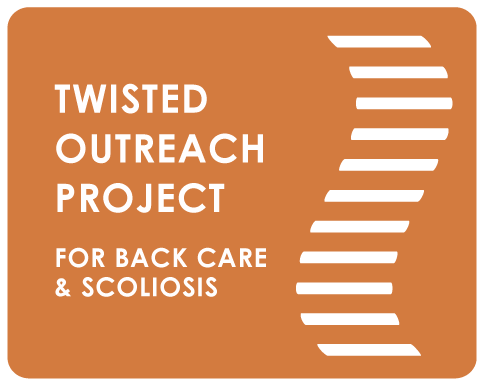Fusion Q&A with Martha Carter - Fusion Before or After Kids?
In our April Newsletter, we launched a Fusion Q&A series. Every month since, Martha has answered an anonymous question about scoliosis fusions.
****
QUESTION: As a woman in her early 30s, is it better to have an adult spinal fusion before or after having kids?
BACKGROUND
Hello! I am a 32-year-old woman with severe scoliosis in three curves: 55° lumbar, 65° thoracic, and a 55° upper thoracic. I am also a yoga teacher and maintain a healthy lifestyle, but my curves have doubled in the last 15 years. I am seriously considering spinal fusion, but also want to have children soon. My chiropractor is fully against surgery and even with the severe curve told me surgery will ruin my quality of life since I am an adult and not an adolescent. I have been trying to talk to various doctors about this and am getting nowhere, and the clock is ticking!
The quick answer is that it is impossible to know!
If she is in extreme pain (which she does not mention), then perhaps it feels urgent.
On the other hand, considering her biological clock is ticking, it makes the most sense for her to have children as soon as possible - as long as she feels physically strong enough to go through pregnancy and the demands of infant care.
It’s really impossible to answer for someone else as every scoliosis and life situation is unique. Plus, in my case, I never had my own children, so I cannot speak from personal experience.
Nevertheless, I have a few thoughts…
1. CURVES CAN CHANGE DURING PREGNANCY
It is well documented that scoliotic curves can change throughout life, particularly during times of hormonal change: adolescence, pregnancy, and menopause. Unfortunately, in most cases, the curves worsen, but I have met many people where they have improved. It takes focus and persistence, but there are several scoliosis-focused therapies to guide the way.
With this in mind, waiting until after pregnancy gives the body an opportunity to possibly find some correction on its own.
2. SURGERY CAN BE DONE AT ALL AGES
It is interesting to note that throughout its short 60-ish year history, scoliosis corrective procedures have focused on teenagers because Adolescent Idiopathic Scoliosis (AIS) is the most common form of scoliosis. When the teenager grows quickly, the curves can worsen with alarming speed, so the medical approach is to ‘catch’ them with bracing and/or surgery before they get even worse.
In more recent years, it has become increasingly common for surgeons to work with older scoliosis patients. I have spoken with people who have had successful surgeries from their 20’s through their 70’s. Each one has their own unique story, and often these stories include the point that choosing to have the surgery as a mature person gives them a sense of empowerment. (Whereas those who have surgery as teenagers often feel traumatized that the decision was out of their control.
With this in mind, having fusion later in life is not only possible, but in some cases, even preferable!
3. LIMITED MOBILITY with FUSION
There is no question that spinal fusion can be helpful, but it can also be difficult to live with. Depending on the vertebrae involved, bending and twisting becomes very limited. It takes time to recover from the surgery, and it takes even longer to feel fully comfortable in a changed body. A regular physical routine will lead to increasing ease over time.
With recovery time in mind, I would recommend a spinal fusion either a few years before having children or several years after when they are more independent - say around 4-5 years old. The amount of lifting, carrying, twisting, bending, pushing, pulling, reaching, and running involved with having an infant puts extreme demands on even the strongest body, so going through those challenging years before a fusion may make more sense.
Because she is already 32 years old, it seems that having children first may be her best option. However, if she is in extreme discomfort now, waiting may not feel right. Mothering with a triple-curved and twisted spine will likely have its own challenges!
CLOSING THOUGHTS
As I have said many times, the decision to have surgery is a very personal one. People experience extremely different outcomes, and it is impossible to compare. Some people swear that the surgery saved them. Others wish they had never had it.
No matter what, if having a spinal fusion seems inevitable - and often it is - it is definitely important to consider the timing of the surgery to best support lifestyle needs and physical/emotional well-being.
Are there any mothers out there with spinal fusion who can weigh in?
We would love to hear from you! Email us!
“I wear a soft brace and that can be an option for keeping a curve from progressing. Dr. Brad Gage in Victoria is a top doctor in this field. He also takes appointments in Surrey once a month.”
— Polly F.

